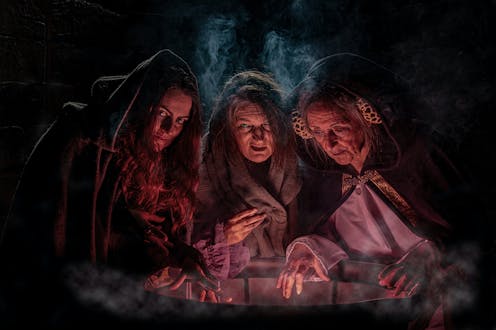Wintering’s grotesque widows reveal the ‘monstrous’ woman as wise and progressive
- Written by Martine Kropkowski, PhD Candidate and Casual Academic, The University of Queensland

A coven of faces. All women, all weathered. Old, middle-aged, younger; one teenager among them. […] They sat and breathed in each other’s stale exhalations. Breath like the grave. Jessica couldn’t help thinking that they were rotting inside. And now she was one of them. She had started to decompose.
The widows are foul, unwashed, rank. They gather at an old farmstead with peeling wooden boards and “holes in the veranda you could put a fist though”. They give off a “urinous fug of sweat and unwashed clothing”. A woman in “a brown shapeless dress, sweat-stained at the armpits” grows long, dark hairs from her upper lip and neck. Their partners have all disappeared. And so has Jessica’s.

















